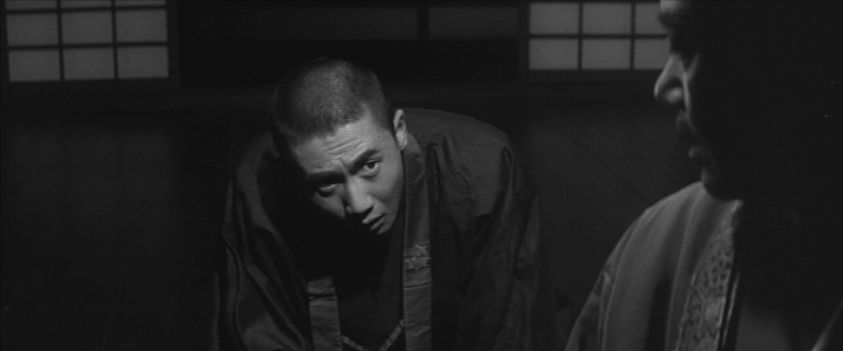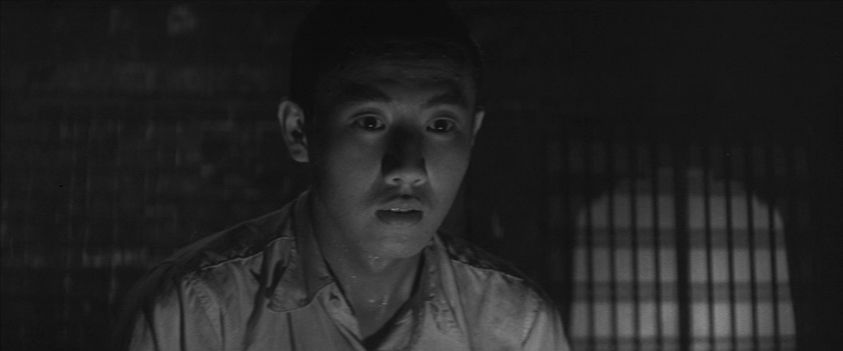« Coffee Break | Main | Saving General Yang »
December 03, 2013
Enjo

Kon Ichikawa - 1958
Daiei Video DVD
My interest here is based wanting to see as many films as I can by Kon Ichikawa. I have some respect for Yukio Mishima as a writer, but do not revere him. It's been many years since I read Mishima's novel, The Temple of the Golden Pavillion. Ichikawa's adaptation is faithful to the spirit, if not the letter of Mishima's novel about a young Buddhist priest disturbed by the gap between his ideals and uncomfortable realities.
The film also provides very different performances by two actors who would become more famous primarily in samurai films in the Sixties. Raizo Ichikawa plays the young stuttering priest who burns down the temple rather than see it defiled as a tourist attraction. Tatsuya Nakadai is a fellow novice, physically limited by a clubfoot. Both actors were about the same age, although Nakadai looks more mature than the still boyish Ichikawa, who was twenty-seven at the time he made this film. Although Nakadai's role here anticipates the kind of manipulative characters he would play for Hideo Gosha, I don't think anyone watching Ichikawa would expect him to star in a series of films about a sometimes ruthless ronin.

As in The Burmese Harp and An Actor's Revenge, what probably attracted Kon Ichikawa here was again exploring the difference between truth and appearances. In The Burmese Harp, appearance becomes reality as the Japanese soldier, by dint of his actions, becomes a priest. In An Actor's Revenge, the female impersonator can not escape his roles either in social caste or as a female character off stage. The novice priest, Goichi, is in a conundrum where his stuttering makes him an outcast. Simultaneously, Goichi's inability to verbalize causes greater problems when manifested in physical actions, such as pushing down a young woman, rather than allowing her to enter the venerated temple. Goichi also finds himself torn between wanting to act in the manner of a priest, and an inarticulated attraction to more earthly pursuits.
In an interview with Joan Mellen, Kon Ichikawa discussed his own change to the source novel, by making a connection between economic poverty and what he describes as spiritual poverty. References to Goichi's father, also a priest, frequently refer to his being poor. Goichi's mother comes to the temple where Goichi now lives, to work work, reminding Goichi that she has to eat. The temple serves as a tourist attraction, its revenue often coming from American G.I.s, rather than donations from believers. For contemporary western viewers, one may need reminding that as the film takes place a few years following the end of World War II, the defeat of Japan undermined core cultural beliefs in addition to the economic turmoil. For Goichi, what the temple represents in his mind is mocked by the reality of contemporary Japan and materialism of the priests. And unlike the pre-war Japan that would make suicide a noble act, Goichi's death is his final, meaningless, act of rebellion.

Posted by Peter Nellhaus at December 3, 2013 08:08 AM
